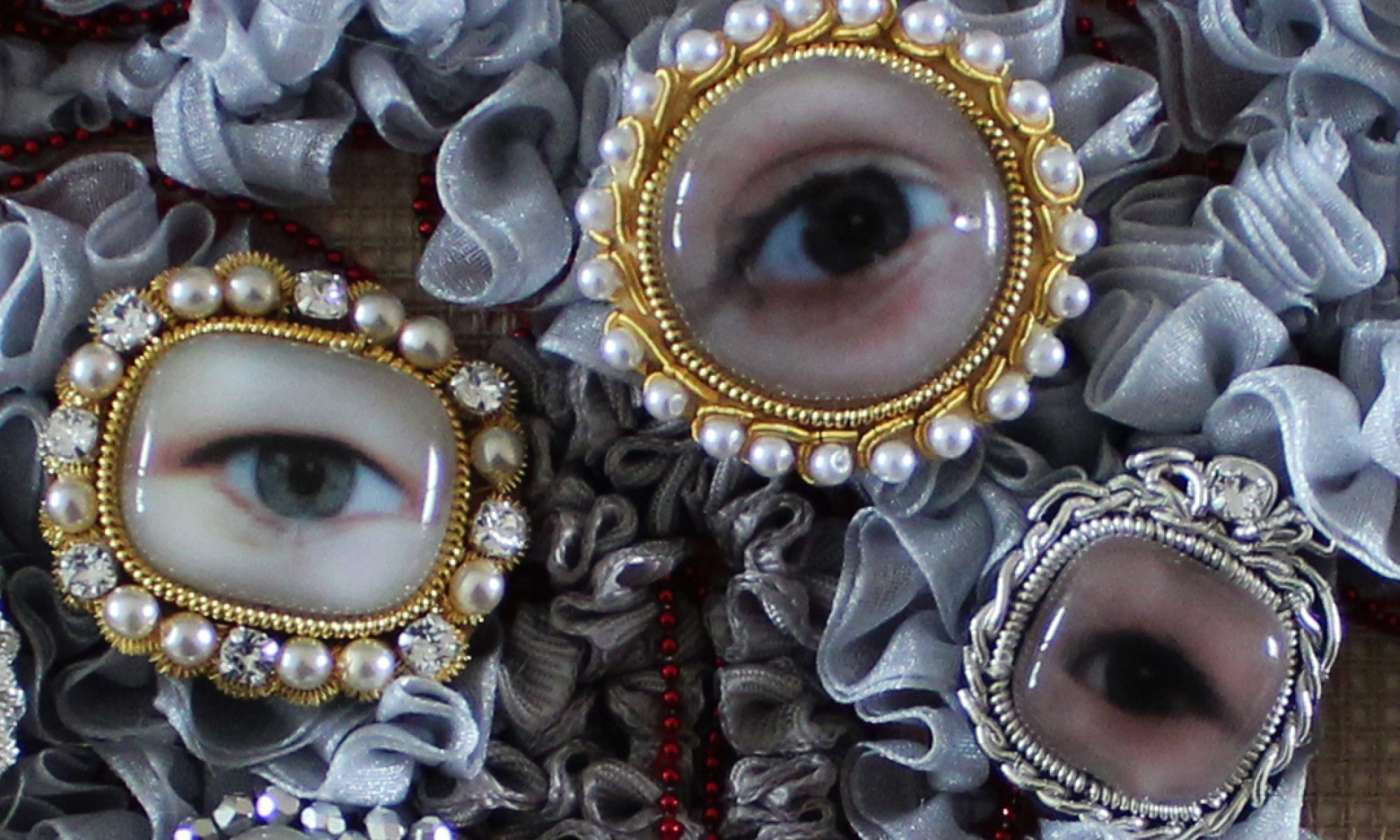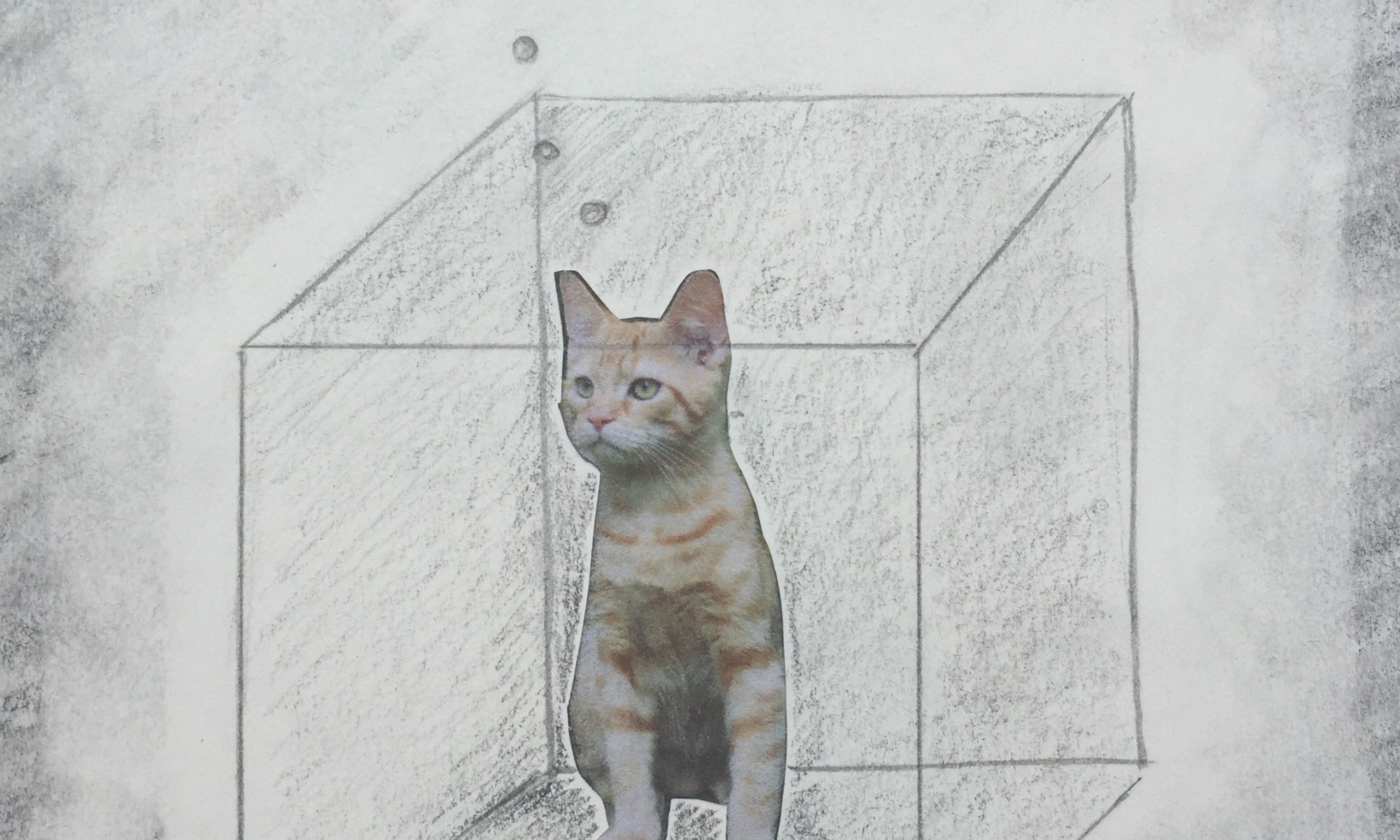I like cats, and I have a particular fondness for Schrödinger’s. I often invoke this famous feline as a way of taming my anxiety about something that might or might not happen. Standing with my sister in Cophenhagen airport in 1999 after a long trip, waiting for the interminable trundle of the conveyor belt to bring us our backpacks, full of all kinds of nervousness about returning home, I found myself saying that until we actually saw the backpacks (we’d previously lost them on another leg of the trip), they were both lost and found. Schrödinger’s baggage. Somehow it does justice to the anxiety but doesn’t lose hope, and helped me to live with my fears for the moment, until there was something certain to deal with. For me, that ambiguous cat perfectly nails the way that a sense of doom and a sense of hopefulness can co-exist together (The backpacks did appear by the way.)

As it turns out, this is a misunderstanding. Schrödinger’s cat was actually describing the absurdity of a particular concept proposed by Einstein, among others, who suggested a theory of quantum mechanics that meant that until a certain event occured, atoms could exist in mutliple states at once. Schrödinger did not support this idea – he put forward his cat centred thought experiment as a way of showing that if what Einstein said was true, then the cat would be both alive and dead at the same time, something he felt was absurd. That’s as much as I would dare to claim to understand about the subject, but there’s more here if you want to check it out. So, I was misusing and misunderstanding all along. However, I’m not ready to let go of this dead and not dead cat quite yet Mr Schrödinger!
My Mum retired from her profession as a Doctor when she was sixty. She was starting to forget her patients’ names, and that bothered her. Over the following twenty years it became clear that she had dementia, eventually getting an offical diagnosis of Alzheimer’s towards the end of this time. Everyone’s experience of dementia is different, and Mum experienced symptoms of forgetfulness and difficulty organising her thoughts long, long before it crossed her mind that this was her path.

I’m now fifty three, and I find myself forgeting things, struggling to get my thoughts in order and generally being rather slower on the uptake that I was. Now this could be the well documented ‘brain fog’ of the perimenopause. It could be the pandemic related amnesia and brain-jumpiness many of us have reported. It could be the early stages of dementia. It feels like a difficult thing to hold together: the possibility of dementia and not-dementia. To ignore the possibility somehow doesn’t do justice to the potential reality – Alzheimers is heritable to some extent, even though lifestyle factors and other things play a part. Plus, you know, the risk of developing dementia at age 65 is 1 in 14 people according to Alzheimer’s Research UK. The odds aren’t that long. But to disappear into a minute examination of every moment of haziness doesn’t seem a good way to live either.

Somehow, Schrödinger’s cat holds this together for me. It’s a way to both focus on living well, really living, and to honour the real terror of dementia without suppressing or dismissing it. I call this Schrödinger’s Dementia. It’s a reminder to grasp the moment, and to live well. Mum has actually dealt brilliantly with her disease. It’s pretty horrific as you can imagine, but she was lived well when she could, and had many wonderful moments in what for her has been a long run into the latter stages of the disease.
This is my promise to myself right now, at 53 and forgetful: to live with Schrödinger’s Dementia and to live well. And to make this a committment I am setting it in stone. I’ve asked jeweller Isabelle Capitain to make a contemporary memento mori ring to set one of my essex crystal jewels.

Memento Mori means ‘Remember you will die’, and goes back to antiquity as an (often fairly graphic) symbol of the inevitablility of death and an invocation to live well. I’m greatly indebted to Hayden Peter’s extensive lectures and resources in this area, and encourage you to check it out if this interests you, especially his two part lecture on Memento Mori Jewels: Skeletons and Symbolism. From the 16th century onwards Memento Mori Symbolism worked its way into jewellery in the forms of skulls and coffins. Sometimes a memorial, it was also in the early stages simply a call to remember that we all die, and accordingly, to live well. They are wonderful, bizarre and poetic things and they echo really well the absurdity but compelling nature of the Essex Crystals I’ve been working on.

So I made a clutch of little ‘essex crystal’ skulls, selected one and with Isabelle’s expert design skills and ideas, a ring is taking shape. I chose my cheeriest little skull – it’s more fairground ‘Tunnel of Terror’ than ‘Christopher Lee’, which suits me; I feel this is someting I could live with for the rest of my life. And we picked grey rose cut diamonds to enhance it, with a nod to the Georgian origin of many fine examples of these rings.

For me, jewellery is always about a personal moment, sometimes quite small, but sometimes huge, and this is probably the most deeply personal piece yet. This ring will be a call to live every moment, and to live well. It’s also a celebration of my mum and the way she has dealt with, and continues to deal with, this horrible disease. It is a symbol of a space where I hold the hope of not having dementia with the fear of having it together as best I can. Do you relate to this at all? Do let me know. And, I do have four little skull crystals, each with their own special character, and I’ve teamed up with Isabelle to offer you a memento mori ring all of your own. Find out more here. And share your own experiences of meaningful jewels; handed down, purchased, commissioned, reworked. Such a rich mix of life, history, crafted-ness and personal story.


Fascinating. Thankyou for the invaluable reminder to live well.
LikeLike
Thank you. It’s very much on my mind at the moment
LikeLike
What an eyeopener of an article, on so many levels. Love the Essex Crystals and how they’ve inspired your work. The rings are looking fabulous and very, very special.
LikeLike
Thanks so much Milly. It has been quite an adventure and I’m really excitedabout the ring. It does feel especially meaningful
LikeLike